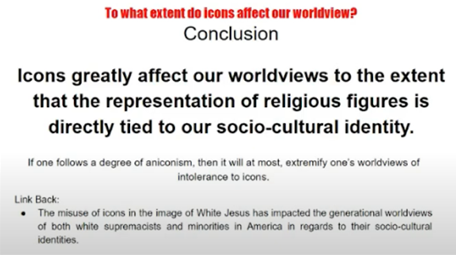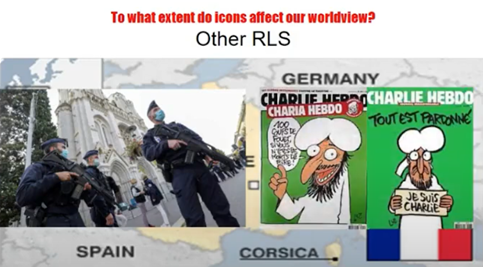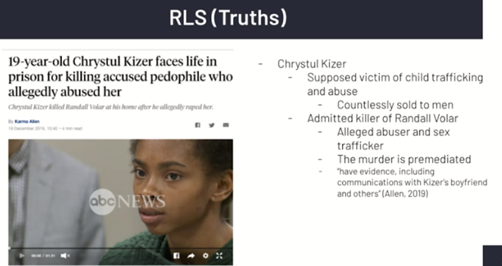
Admin News
We recently reached one year since the first case of Covid-19 was identified! What have we learnt about the psychology of keeping our community safe?
The following are points that have been gleaned from various articles and discussions over the past year, but based largely on information from the Truman Group in AAIE’s Community Conversations Webinar and COVID-19 BRIEFING #145, December 2, 2020.
The challenges:
- People can tolerate and get used to lots of things and learn to live in many different ways if they’re given parameters. When we do not see any end to the pandemic, however, we’re mostly not able to do well due to the way that we organize ourselves psychologically and functionally. This all takes a toll, wearing us down, and making it difficult to plan ahead or know what success looks or feels like.
- Most of us define ourselves by doing our jobs well, but expectations and conditions have changed, and at times become ambiguous and/or are constantly changing. We end up having so much more work to do, while we try to cope with changed “goalposts” as to what we should be achieving. This can lead to uncertainty creeping in, which ultimately wears away at self-esteem, a feeling of helplessness, and/or causes you to freeze up to the point you end up becoming ineffective.
- We attempt to redefine the meaning of our profession/tasks and what our goals are to cope with the new situation, but without a defined end to the situation, we shift away from our original goal and try to redefine them again and again.
- Another problem we may face as a community is, when you put people in a situation with a great deal of deprivation and high levels of emotional strain, they tend to move to extreme poles of thought. A lot of gray “tolerance” areas disappear and people become more extreme in their thinking. This impact is being observed in schools when they restart after a long closure and the resulting polarization of thought can cause significant differences in opinion between groups – which can lead to conflict if not dealt with appropriately.
Suggested solutions:
- We often feel like there is no sense of a beginning, middle, or end to the pandemic, but there is! We need to look beyond and through the media hype that tends to promote sensationalism and sometimes even fake or misrepresented news. This is especially difficult when it even comes from a number of different countries and industry leaders around the world. This all contributes to leaving us feeling like the situation is uncontrollable, however, we can make an informed projection on what will happen! Firstly, we have past epidemics and pandemics such as the 1918 Spanish flu, Ebola, Swine flu, and so on, to learn from. Secondly, we have an amazing level of scientific knowledge and capability now that helps us to determine how we can best protect ourselves (such as wearing masks), and have been able to develop numerous vaccine options in an unbelievably short space of time.
- We actually know more right now about what’s going to happen in the next 100 days than at any past date, so we can focus on that instead of some ambiguous future. There’s really good evidence that at least some of the vaccines being produced will be safe and effective. Assuming the vaccine rolls out occurs as currently expected, we can consider ourselves to have, say, a “100-day problem”…not an infinite problem! (*In reality it will be more than 100 days for many regions and groups in the Philippines, but at least the endpoint is observably finite). This means we can now start to think about what’s about to change in our specific community, and how. Having this parameter is more manageable than ever-changing goalposts!
- We’re going to be okay … we’re going to get through it! We still have to continue to work to keep safe through our “100(+) days”, and we still have to prepare and adapt as we develop our “new normal”, but it’s manageable and it’s going to end and we have systems and support structures in place that we’re going to use to overcome the adversity that we’re facing.
- We also need to be prepared for differences of opinion to arise (more than the usual), and to anticipate that some members of our community might act “differently” to what we would expect them to be like before the pandemic. We need to respect differences, be empathetic and caring, and work together on problems and issues that impact our community keeping our shared objectives (as outlined in the CIS Guiding Statements) in mind to guide us.
CIS Core Beliefs that guide us as we travel upon our journey:
- Learning is a joyful, creative, and open-ended exploration.
- Each child’s curiosity needs to be identified and nurtured (morally, socially, physically, and academically) to reach her/his potential.
- Collaboration, communication, and contribution are essential for learning.
- As world citizens, we have respect for self and others, and value diversity in all forms.
- Learning includes contributing to the world through service learning and sustainable environmental stewardship.
- As an IB World School, the Learner Profile Attributes and Approaches to Learning are embedded in all that we think, say, and do.
Together, we are respectful, responsible, and prepared!

Guidance for large or extended families living in the same household
One feature about living in Cebu is many of our community members live in extended families. This presents specific challenges needing special attention to counter the threat from COVID-19. The CDC has published a helpful article that I wanted to share with you. It includes:
- How to protect your household when you must leave the house (first tip – “Don’t leave the household unless absolutely necessary!”… but if you must leave the household, nine tips are given to help!)
- How to protect members of the household who are at higher risk for severe illness
- How to protect children and others from getting sick
- How to care for a household member who is sick
- How to isolate a sick household member when household space is limited
- How to eat meals together and feed a household member who is sick.
Please note this week’s Newsflash is a little less detailed than usual due to being a 3-day week (Friday, Dec. 4th has been declared Osmeña Day holiday for Cebu City and Province). We wish you another restful long weekend, productive studying for our middle and high school students who have end semester assessments to complete next week, and as always, keep safe!
Regards
Dr. Gwyn Underwood, Superintendent

Middle and High School News
by Mr. Dale Wood, Middle and High School Principal
Promoting Student Agency in MHS

Three weeks ago we began exploring the five GOA (Global Online Academy) Online Learning Norms and focused specifically on Norms 1 and 2, Building Trust and Challenging Students, and examined how these have been intentionally addressed and incorporated within our school-wide program. This week I wanted to focus on how the MHS has been addressing GOA Norm 4- Supporting Student Agency. This is an educational concept which has been heavily emphasized in our Elementary School, as it is a primary focus within the PYP. Student agency is also an aspect that we expect to be present implicitly within our MHS courses, especially as our students continue to develop their ability to make sophisticated cognitive choices.
Our new paradigm brought about by remote learning has created greater space for enhanced student independence and flexibility (in terms of students’ daily learning and, when appropriate, due dates). We have set clear and high expectations for them so they understand the targets for required content knowledge and skill development in each unit of study, but have also allowed for a much greater range of choice, voice, and ownership as to how they reach those targets. Our daily morning time and HR are the only mandated periods of the day, creating a defined structure for half of the academic learning time. Our daily attendance during remote learning has been measured not by a “clock”, but rather by student engagement and completion of work.
Our entire afternoon each day, which we have termed “extension time,” provides an opportunity for students to choose what they feel they need to do in their respective courses, whether it be:
- working further on learning engagements
- reaching out to the teacher for clarity or assistance
- collaborating with classmates
- reviewing that morning’s lessons
- previewing for the next day’s class sessions

Our emphasis on project-based learning, particularly in our MYP classes, where we have moved away from an emphasis on tests and exams which tend to be more teacher-directed, provides a great example of how we are promoting student agency in our assessment of student achievement. This is demonstrated and captured most clearly in the MYP capstone, the Personal Project, where student voice, choice, and ownership are all essential throughout the entire process from start to finish with assistance and guidance from Mr. Denton, our MYP Coordinator, and their respective supervisors.
Let’s take a look at how we can see student agency at work in one of our MYP courses and in one of our DP courses.
In Grade 8 our Design Class, taught by Ms. Jumao-as, students learn through the process of design. The students in this class have been investigating and evaluating different methods of communication within their unit on Delivery of Message. Each student group is now in the process of creating a collaborative video that will explain and raise awareness about the specific UN Sustainable Development Goal it has chosen. To plan for their videos, students designed a storyboard to outline the flow and details of their final product. Here are some of the examples created by our Grade 8 students.

The storyboard I made is about the third Sustainable Development Goal, which is Good Health and Well-being. This storyboard will introduce and discuss the goal in detail and what are its aims. It also includes the important details about the aspect of the goal that I will be focusing on, which is mental health, such as what it is, what it affects, and why it is important. The relevance of the goal to us, students, who are part of the school community and how mental health affects many areas of students’ lives is explained here as well. Then, it offers some tips or ways on how students can improve their mental health and well-being so that the audience could get an idea of how to apply them in their lives. Lastly, the storyboard ends in an encouraging closing statement and the list of sources where the information came from. – Fiana
I edited up my storyboard and added the colors. I made more frames to show what I’m going to add in detail. Lastly I added more facts, my sources and a closing statement to impact the audiences. – Sengo
For my first frame I asked with the question of “What is SDG# 6?” to start off my video, it includes a voiceover which might only last for 2 seconds. The next frame is when I start to define SDG# 6 and it aims to give the viewers a deeper understanding of what it’s about. I’m also adding photos related to it to show people how it is visually, this frame also has a voice over and will probably last for about 43 seconds. In the 3rd frame, I start talking about the aspect of SDG# 6 I’m gonna focus on which is Personal and Community Hygiene. I chose to focus on this goal because it’s something that’s been around for a long time but not everyone has it or performs it, focusing on this aspect more will lower the risk of diseases and illnesses. – Gabrielle

Our task for these couple of lessons was to create a storyboard for the video we are going to create. The point of creating a storyboard is to plan out what your video is going to look like. Normally you would draw a series of boxes and draw what you want in the video inside those boxes and give special instructions under like the dialogue ( what music is going to be playing if there is any, how long each frame is gonna stay for, etc.) Since my video was about climate action I started off my story board with 3 frames about different natural disasters with the first one being a tsunami, the second one an earthquake, and the third a flood. I want to put these in the start so I could explain how climate change causes these natural disasters. Then the next few frames explain what climate change is. The frames after that talk about what climate change causes and how it is caused. After those frames the next are about how people can help stop global warming and prevent climate change. – Miguel
This story board is based on my SGD goal: Quality education for all kids. I have shown this on this storyboard but it is put into separate PDF files. Each frame explains different things but some of them just have questions like “why is this important to accomplish?” so that the viewer can understand the next frames. – Aaryan

Grade 12 TOK Presentations
As part of both our IBDP and CIS Diploma programs, all students in Grade 12 complete significant work within what is called the “IB core” (i.e. CAS, Extended Essay, and Theory of Knowledge) which is designed to broaden their educational experience. The “core” also allows students to draw connections between their different subjects and helps them develop and apply important skills, both academic and dispositional (e.g. research, communication, caring, being principled), which will serve them well in the future.
This week our Grade 12 students have been working on the culmination of their last three semesters in the TOK course with one of the two primary assessments: the TOK Presentation. TOK is a unique course in the IB curriculum as it guides and challenges our students to investigate what they know and how they know it, and it helps them develop critical skills which are relevant for analysis across their other courses.
Of course this year our students have negotiated the unique challenge of making their presentations virtually, which are twenty minutes in length when working in pairs, ten minutes if done individually. They engage in cognitive “heavy-lifting” to develop a coherent line of thinking, formulating well-considered knowledge questions, claims, counterclaims, and then reach logical conclusions- all backed by relevant and convincing evidence. At the end of the presentation the teachers and students ask questions to help them clarify their points or fill in possible gaps in their argument. The words that come to my mind when I consider these student performances are knowledgeable, insightful, articulate, and polished. Students are, by nature, curious and often struggle to find their own beliefs, identity, and voice, and TOK creates a space and framework where they can explore and develop these areas.
One of the requirements for the TOK Presentation is that students incorporate real-life situations (RLS) to show how their knowledge questions apply to relevant happenings in the real world, whether personal to them or in the area of current events.










